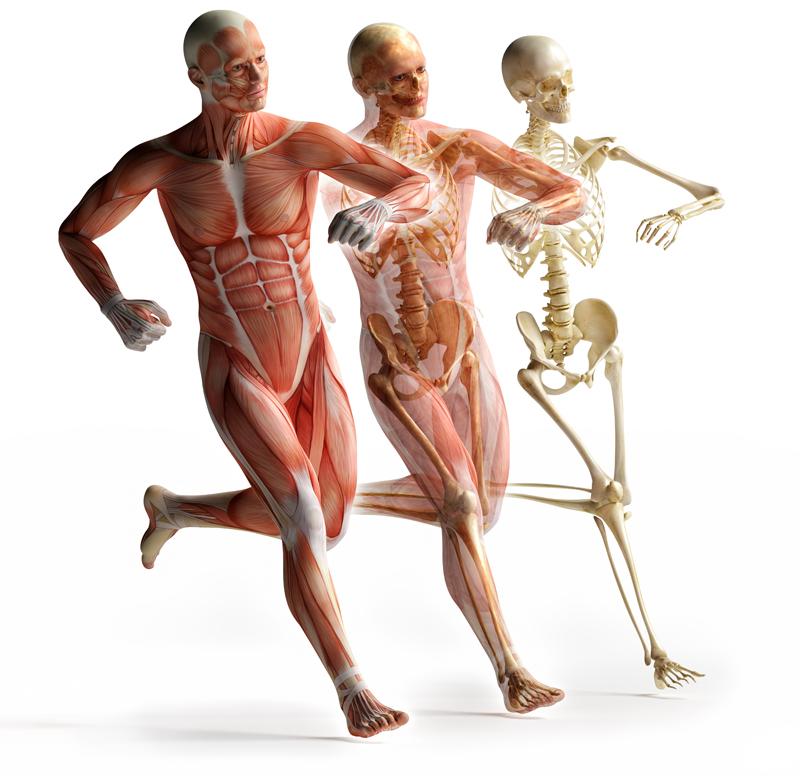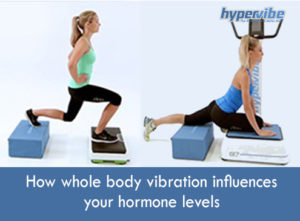How Catabolism and Anabolism Affect Muscle Mass

In a previous article, I’ve talked about muscle tone and how you can look more toned without getting big and looking bulky. Today we’ll take a look at another interesting aspect that can affect your physical appearance and we’ll discuss the two components of metabolism – catabolism, and anabolism, as well as their impact on muscle mass and body composition.
Throughout the day, your body is either in an anabolic or catabolic state; these two cannot manifest at the same time, as they define opposite processes. Anabolism is the multitude of chemical reactions that take place inside the body and promote the construction of molecules, tissues, and organs, and the repairing of damaged tissues, while catabolism defines the degradative reactions that break down molecules and tissues.
Both these processes are necessary for maintaining a healthy body. In the anabolic state, your body consumes energy for repairing the tissues and growing new cells or maintaining the existing tissues healthy; on the contrary, in the catabolic state, the body releases energy by breaking down larger molecules to their building blocks.
Without anabolism we wouldn’t be able to recover after a workout and our body wouldn’t be able to regenerate and repair its damaged tissues at the end of the day. Without catabolism, we would have no energy for our daily activities and we wouldn’t be able to efficiently use the calories that come from food. Both these processes are essential for maintaining the optimum health state, but what really makes the difference is the amount of time spent in each of these metabolic states.
Too much catabolism cannibalizes muscles and favors fat gain
Anabolism and catabolism balance each other to an extent, but when you’re in the catabolic state for too long, your body breaks down muscle tissue for fuel production and this is not desirable, regardless of your fitness goals. Whether you’re interested in getting an athletic look, in putting on muscle mass, or simply in maintaining your health, you should aim to stay in the anabolic state and push through the catabolic one as quickly as possible.
The problem here is that catabolism can be triggered by all forms of stress, from physical exercise to lack of sleep or stress at work. To balance this process, you need to adopt an adequate rest program, to nourish your body with all groups of nutrients so that the organism can repair the damaged tissues and also to choose your workouts carefully.
Exercises that favor catabolism include aerobic activities and moderate-intensity workouts that are sustained for hours. Running, swimming, cycling, skiing, and other forms of exercise that burn lots of calories and involve no resistance training trigger the catabolic state, and the release of certain hormones like adrenaline and cortisol.
Surely, all these activities are good for your body and your heart, as they enhance your cardiovascular fitness, but when they’re maintained for several hours they can become damaging. The hormones released during the catabolic state are beneficial when produced in certain amounts, but when those quantities are exceeded, unpleasant symptoms appear.
Cortisol, as you know, it’s also called the stress hormone; it increases blood pressure and minimizes the response of the immune system. Also, it leads to higher blood sugar levels, just like glucagon, another hormone produced during catabolism. Glucagon stimulates the destruction of glycogen by the liver, therefore it also causes sugar to be released into the bloodstream.
These effects are useful when exercising at moderate intensity for 40-60 minutes for example, as your body needs that energy boost for sustaining the workout and powering the muscles. But cortisol also favors the accumulation of fat, especially in the abdominal area, and when there’s too much sugar in the bloodstream that’s not used for energy purposes, plus too much cortisol, your body becomes likely to gain fat.
To summarize this, catabolism results in no accumulation of muscle mass; when the catabolic state lasts for a limited period of time, it favors the loss of body mass – muscles and fat, but when the process lasts for too long, it can actually cause weight gain as a result of prolonged stress and altered hormone and blood sugar levels.
For someone whose purpose is to lose fat, to build a nicely shaped and muscular physique, or to get leaner and maintain a good health state, catabolism can become a nightmare. The best way to avoid being in the catabolic state for too long is to limit the cardio workouts to 40-60 minutes, to get adequate nutrition, and to recover properly.
Remember, catabolism is necessary because it creates the energy that your body uses for repairing the tissues, for growth, synthesizing hormones, and for many other internal processes. But all your efforts can be compromised if your workout program, diet, and rest schedules aren’t adequate.
Anabolism repairs muscles and stimulates growth
In the anabolic state, the body uses simple molecules as building blocks for complex ones and repairs the damaged tissues. It also produces hormones like the growth hormone, insulin – which regulates the levels of sugar in the bloodstream and helps in the utilization of glucose for energy purposes, or testosterone and estrogen. Testosterone helps in strengthening the muscles and increasing bone mass, while estrogen is necessary for regulating the menstrual cycle in women and preserving bone mass.
For your body to remain in the anabolic state for longer, you need to fix your sleep routine, diet, and workouts. Getting enough sleep allows for all your tissues and organs to repair and regenerate, and normalizes the production of hormones, including those that control the appetite, hunger sensation, stress levels, and mood.
Eating a balanced diet and supplying your body with enough protein and carbs is essential for maintaining the anabolic state, as, without nutrients, the body can’t replace the molecules that were broken down during catabolism therefore the tissues can’t be repaired.
As for exercise, although it may sound counterintuitive, the type of workout that favors anabolism is strength training and not cardio exercise. Whether you opt for HIIT, weight lifting, WBV, or isometric exercises, as long as you force your muscles to work against resistance and to burn energy for powering through the workout, you consume the glucose that’s available in the bloodstream and create the premise for muscle growth and strengthening.
For muscle tissue to grow, it first has to be damaged; then, nutrients and oxygen are used for refiling the emptied reserves and for repairing the fibers. Although a strength training session will burn fewer calories than a cardio session, in the long run, the benefits will be greater, as it will help you put on lean mass, strengthen your muscles and maintain a high metabolic rate, thus consume the eaten calories faster.
Have something to add to this article? Comment below or join our Facebook community and share your thoughts with us!














